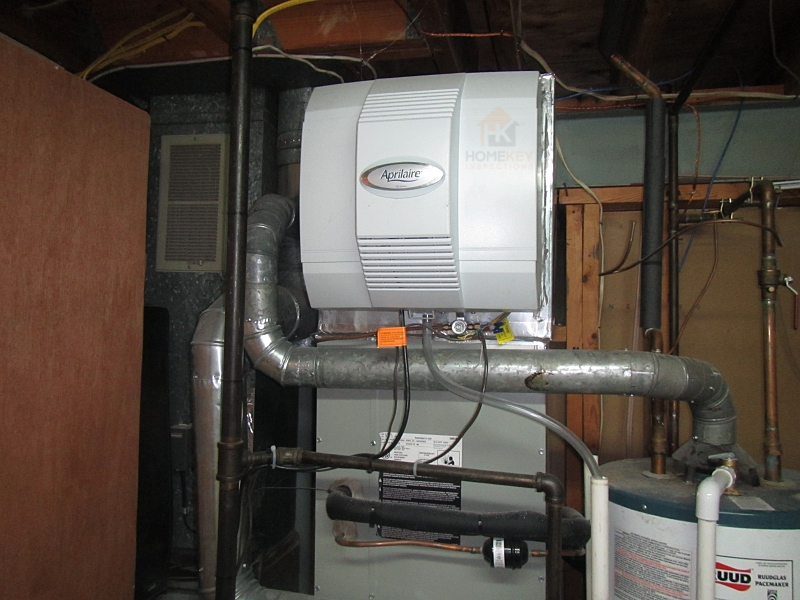Plumbing Inspections: Common Issues and What They Mean for Homebuyers

A home’s plumbing system is one of its most critical components, impacting everything from day-to-day convenience to long-term structural integrity. At HomeKey Inspections, we follow the ASHI Standards of Practice to ensure that the plumbing systems in Northern Virginia, Washington D.C., and Maryland homes are evaluated thoroughly. Whether it’s a newly constructed home or an older property, identifying plumbing issues early can save homebuyers from costly repairs and potential water damage. Here’s an overview of the key areas we examine during a plumbing inspection.
1. Water Heaters and Flues
- What We Check: The water heater is inspected for proper installation, age, and signs of rust or leaks. We also assess the flue to ensure it is venting exhaust gases safely and is free of blockages or improper connections.
- Why It Matters: A failing water heater can lead to inefficient operation or even flooding. Improper flue venting may cause carbon monoxide buildup, posing a serious health hazard.

This water heater flue does not retain a positive slope upwards as it exits the home; portions of it are level or even negatively sloped. This is a safety hazard.
2. Pipes, Fittings, and Materials
- What We Check: The condition of visible pipes and fittings is evaluated for leaks, corrosion, or damage. We also identify outdated materials, such as polybutylene pipes or galvanized steel, which may need replacement.
- Why It Matters: Corroded or outdated pipes are prone to leaks and reduced water pressure, potentially leading to water damage and costly repairs.

The grey-colored supply piping shown above is polybutylene (PB) piping. It was a particularly popular material during the 1980s into mid-1990s but has been shown to fail and cause leaks.
3. Fixtures, Faucets, and Valves
- What We Check: Faucets, showerheads, and valves are inspected for leaks, drips, and proper function. We also ensure fixtures are securely installed and assess the presence of shut-off valves at key points.
- Why It Matters: Leaky faucets and malfunctioning valves can waste water and increase utility bills. Accessible shut-off valves are essential for preventing extensive damage during a plumbing emergency.
4. Drain, Waste, and Vent Systems
- What We Check: Inspectors examine drains for proper flow and test for clogs. Vent pipes are evaluated to ensure they allow sewer gases to escape safely and maintain proper water flow.
- Why It Matters: Improperly sloped drains or blocked vents can lead to slow drainage, unpleasant odors, and potential health hazards.

5. Toilets, Bathtubs, and Whirlpool Tubs
- What We Check: Toilets are tested for proper flushing, leaks, and secure installation. Bathtubs and whirlpool tubs are inspected for drainage, proper water flow, and operational features (e.g., jets in whirlpool tubs). All fixtures are also checked for damage.
- Why It Matters: Leaking or unstable fixtures can cause water damage, mold growth, and costly repairs if left unaddressed.

6. Water Flow and Pressure
- What We Check: Inspectors measure water pressure and flow throughout the home, often using hose bibs (outdoor faucets) as a common test point. Hose bibs are also inspected for leaks, presence of vacuum breaker, and other potential issues. Our inspectors also note whether hose bibs have been winterized (particularly important in colder climates).
- Why It Matters: Low water pressure can indicate pipe obstructions or municipal supply issues, while high pressure may damage pipes and fixtures. Leaky or unprotected hose bibs can waste water and cause freeze-related damage in the winter.

Water pressure reading taken at an exterior hose bib showing excessive water pressure (should be within 40 and 80 PSI). Overly high water pressure in a home can damage pipes and fixtures over time.
7. Gas Meters and Pipes
- What We Check: Gas lines related to water heaters and other appliances are inspected for proper installation, leaks, and compliance with safety standards.
- Why It Matters: Gas leaks are a significant safety hazard and can result in fires or explosions if not addressed.
This video was taken by one of our home inspectors to document an interior gas leak. First detected using his nose, the inspector then confirmed the presence of the gas leak using his gas leak detector.
Why Plumbing Inspections Matter
Plumbing systems are often hidden behind walls and under floors, making them easy to overlook. However, neglecting to inspect this critical system can result in unpleasant surprises for homebuyers, from burst pipes to costly water damage. At HomeKey Inspections, we understand the unique plumbing challenges faced by homeowners in Northern Virginia and Maryland, including aging infrastructure and the need for modern safety standards.
By conducting a thorough inspection of all plumbing components, we help you make informed decisions about your home purchase. Don’t leave the condition of your plumbing system to chance—schedule your home inspection today and let our inspectors provide you with peace of mind.
Ready to book your inspection? Contact HomeKey Inspections to learn more about our comprehensive home inspection services in Northern Virginia, Washington D.C., and Maryland.

